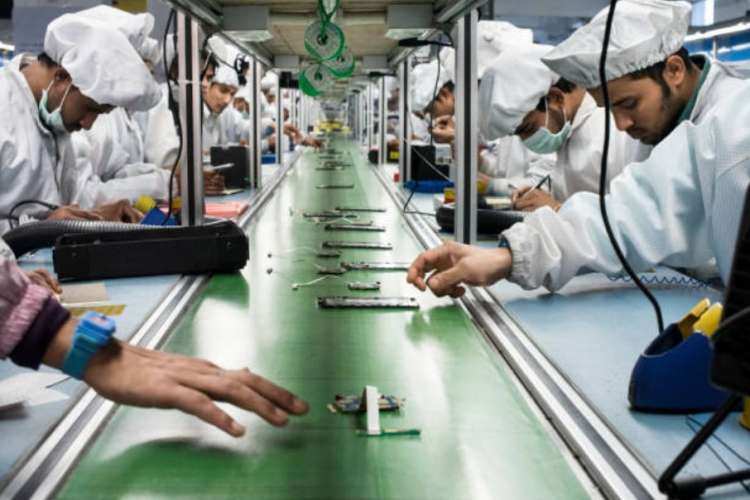
The government’s ambitious PLI scheme, launched to boost domestic manufacturing, is approaching the five-year mark. As it nears this milestone, the Union government is recalibrating the initiative, expanding its scope with fresh infusions of capital and policy tweaks. Last week, the Union Cabinet cleared a fresh tranche of incentives worth Rs 22,919 crore, reiterating its commitment to sustaining the momentum achieved so far.
Indian firms such as Dixon Technologies, Amber Enterprises, Tata Electronics, Munoth Industries, and the Murugappa Group have shown a strong appetite for leveraging these incentives. Global giants including Japan’s TDK Corporation, Taiwan’s Hon Hai Technology Group (Foxconn), Austria’s AT&S AG, and Japan’s Murata Manufacturing have also expressed interest, signalling international confidence in the scheme.
READ | Trump’s Liberation Day tariffs risk global recession
The scheme envisions investments ranging from Rs 50 crore to Rs 1,000 crore across various segments of electronic components, with a significant focus on printed circuit boards and passive components like capacitors. While the final guidelines are yet to be released, preliminary discussions suggest that incentives could average over 5% of the estimated Rs 4.56 lakh crore worth of production. Some reports indicate that the government may offer up to 25% in upfront capital subsidy and up to 28% of production value over five years.
PLI scheme – The poster child of Make in India
The PLI scheme is considered as the linchpin of the Modi government’s Make in India initiative. Nowhere is its success more evident than in smartphone manufacturing, where exports touched a record $17.84 billion between April 2024 and January 2025. This performance has only strengthened the government’s resolve to expand the scheme and create a more conducive environment for manufacturing in India. However, critics argue that PLI scheme alone may not be sufficient to transform India into a global manufacturing hub.
Déjà vu for India’s industrial policy
India has long recognised the need for a robust industrial policy. As early as 2006, the National Manufacturing Competitiveness Council highlighted the crisis in the manufacturing sector. The National Manufacturing Policy of 2011 attempted to address these issues but has since faded into obscurity.
The PLI scheme, while ambitious, is not a novel idea. It is a form of industrial policy—explicit government support to select sectors through direct and indirect incentives. Globally, such policies have been used to restructure struggling industries or develop strategic sectors. The US has long pursued a strategy of targeted public investment to attract private capital, while the European Union combines regulatory and financial support in its industrial policy.
The Indian version, however, has a unique twist. It actively invites foreign participation to strengthen local manufacturing alongside domestic firms—a departure from the inward-looking policies of the past.
Where the PLI scheme stumbles
The primary criticism of PLI revolves not around its intent but its execution. Excessive regulation and bureaucratic hurdles have slowed implementation, creating bottlenecks that undermine its effectiveness—at a time when speed is of the essence.
Among its most vocal critics is former RBI Governor Raghuram Rajan. Rajan described the scheme as “a failure in the making.” He argues that rather than boosting domestic production, the scheme has led to a surge in imports of key components like semiconductors, displays, and batteries. He questioned whether India is genuinely manufacturing high-tech products or merely assembling imported parts.
Rajan also urged policymakers to evaluate the scheme’s true impact by looking beyond exports to include imports, profit repatriation, and royalty outflows. According to his analysis, the net exports of phones and components deteriorated from -$12.9 billion in FY17 to -$21.9 billion in FY23. In response to such concerns, the government introduced PLI 2.0 for the IT hardware sector, incorporating some of Rajan’s recommendations.
The road ahead: Beyond PLI
Experts contend that the current scheme lacks emphasis on research, development, and innovation—critical elements for building long-term industrial competitiveness. While some PLI variants include local value addition requirements, studies have shown that such mandates often fail to significantly increase domestic value creation. Instead, economists suggest designing incentives based on efficient cost structures and productivity gains.
Another flaw lies in the scheme’s inability to address the root causes of India’s import dependence: limited technological capabilities, weak supplier networks, and inadequate infrastructure. Research on global value chain integration suggests that alignment with trade blocs like IPEF and targeted infrastructure investments would yield better results. Moreover, increased foreign direct investment, facilitated by the 2020 liberalisation reforms, could bring critical manufacturing know-how and integrate India more deeply into global production networks.
To truly unlock the potential of manufacturing, India must move beyond a one-size-fits-all approach. Sector-specific interventions are essential. For import-heavy industries, the focus should be on technology acquisition and supplier ecosystem development. For traditional sectors dominated by small firms, clustering and quality enhancement must take precedence.
The PLI scheme remains the most ambitious industrial initiative in India’s recent history. But without addressing its structural weaknesses, it risks becoming yet another high-decibel, low-impact policy experiment. The government can either let the scheme fade like past efforts, or recalibrate it with strategic precision—learning from global best practices, including the industrial successes of East Asia. Only then can India turn its manufacturing promise into reality.
